I have one 11-dimensional vector which is a division of [0,1]:
Vec = seq(0,1,1/12)
and a 11-by-11 matrix
A = matrix(c(0.9024306 , 0.8452877 , 0.8141085, 0.7549162 , 0.6824799 , 0.6109678 , 0.5905854 , 0.5299411, 0.4550736, 0.3858676, 0.2143513,
0.7819361, 0.8210354 , 0.8331744, 0.8182613 , 0.7622890 , 0.7101383 , 0.6931922 , 0.6408286, 0.5925585 , 0.5282755, 0.4037932,
0.7213725 , 0.8014270, 0.8334573 , 0.8394664 , 0.7965267 , 0.7557029 , 0.7411934 , 0.6947566 , 0.6590388 , 0.5987447 , 0.4968339,
0.6747898 , 0.7823459 , 0.8286614 , 0.8500438 , 0.8196929 , 0.7884412 , 0.7761882 , 0.7352614 , 0.7087581 , 0.6523485 , 0.5672221,
0.6344532 , 0.7626475 , 0.8205274 , 0.8546509 , 0.8372373 , 0.8149571 , 0.8049617 , 0.7695615 , 0.7506879 , 0.6982902 , 0.6272401 ,
0.5953397 , 0.7403922 , 0.8086858 , 0.8545969 , 0.8517511 , 0.8388487 , 0.8313441 , 0.8020533 , 0.7902309 , 0.7423674 , 0.6845121 ,
0.5607208 , 0.7177988 , 0.7945752 , 0.8503988 , 0.8623037 , 0.8583240 , 0.8533009 , 0.8301061 , 0.8242061 , 0.7809468 , 0.7343530 ,
0.5235966 , 0.6901752 , 0.7751871 , 0.8410303 , 0.8709305 , 0.8772494 , 0.8752120 , 0.8593621 , 0.8594394 , 0.8218108 , 0.7868039 ,
0.4792436 , 0.6519074 , 0.7454233 , 0.8222904 , 0.8770665 , 0.8968215 , 0.8988547 , 0.8930324 , 0.8996717 , 0.8698448 , 0.8479224 ,
0.4310832 , 0.6026974 , 0.7035051 , 0.7909658 , 0.8776638 , 0.9136550 , 0.9208403 , 0.9277279 , 0.9406499 , 0.9208578 , 0.9120395 ,
0.3622446 , 0.5148011 , 0.6215788 , 0.7210252 , 0.8646102 , 0.9275842 , 0.9438128 , 0.9730440 , 0.9930145 , 0.9911498 , 0.9985318),nrow=11,byrow=TRUE)
What I expect is like a scatter plot like the following:

each point represents a pair, e.g., (0.08333, 0.08333, 0.90243) etc.
I tried plot_ly to plot this, but failed. Can anyone shed lights on how to draw this? I truly appreciate your suggestions!

